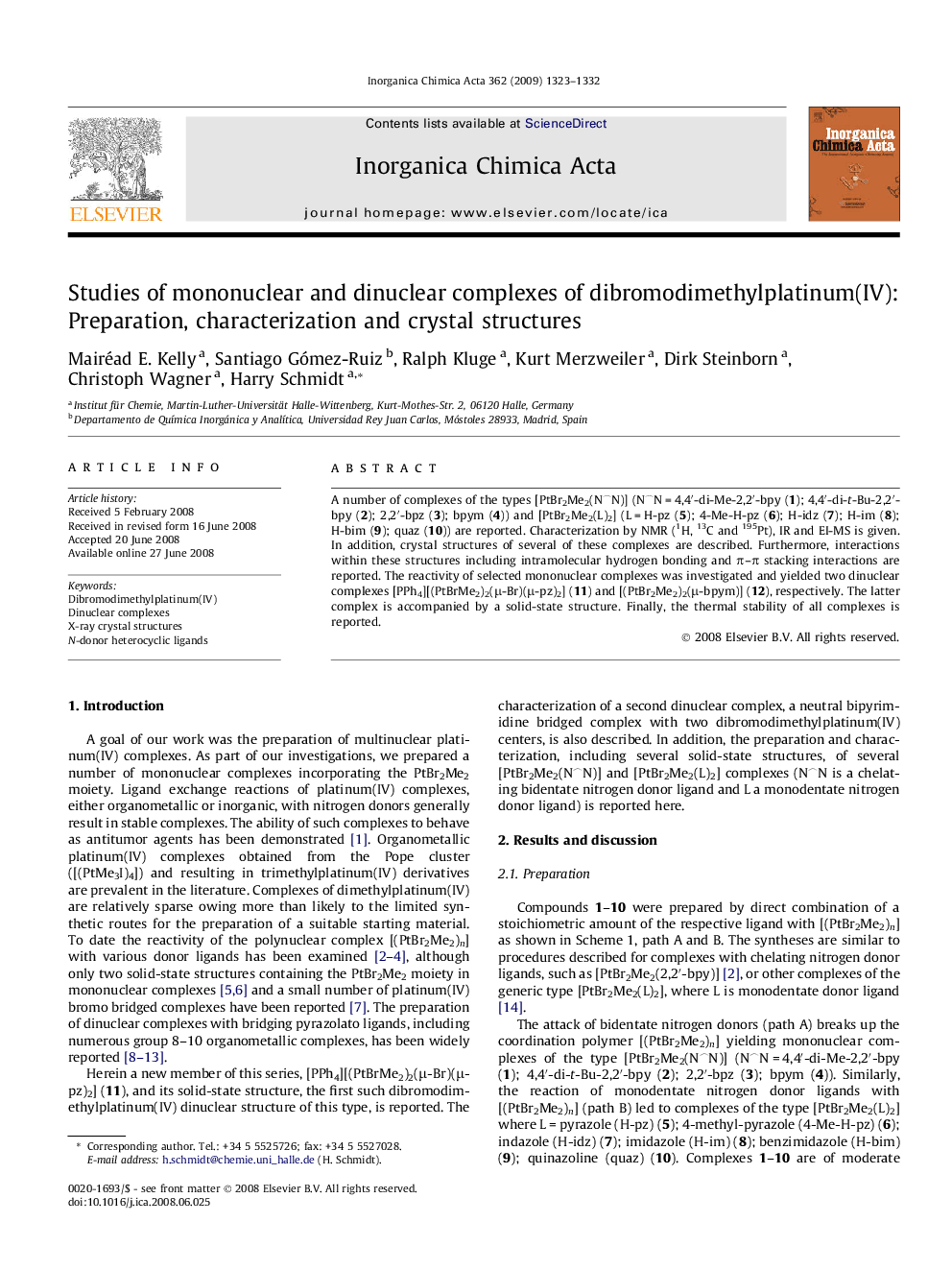| Article ID | Journal | Published Year | Pages | File Type |
|---|---|---|---|---|
| 1307071 | Inorganica Chimica Acta | 2009 | 10 Pages |
A number of complexes of the types [PtBr2Me2(N⌢N)] (N⌢N = 4,4′-di-Me-2,2′-bpy (1); 4,4′-di-t-Bu-2,2′-bpy (2); 2,2′-bpz (3); bpym (4)) and [PtBr2Me2(L)2] (L = H-pz (5); 4-Me-H-pz (6); H-idz (7); H-im (8); H-bim (9); quaz (10)) are reported. Characterization by NMR (1H, 13C and 195Pt), IR and EI-MS is given. In addition, crystal structures of several of these complexes are described. Furthermore, interactions within these structures including intramolecular hydrogen bonding and π–π stacking interactions are reported. The reactivity of selected mononuclear complexes was investigated and yielded two dinuclear complexes [PPh4][(PtBrMe2)2(μ-Br)(μ-pz)2] (11) and [(PtBr2Me2)2(μ-bpym)] (12), respectively. The latter complex is accompanied by a solid-state structure. Finally, the thermal stability of all complexes is reported.
Graphical abstractThe reaction of [(PtBr2Me2)n] with various nitrogen heterocyclic ligands (chelating (N⌢N) or monodentate (L)) yielded a number of platinum(IV) complexes of the type [PtBr2Me2(N⌢N)] or [PtBr2Me2(L)2]. Starting from mononuclear complexes, the dinuclear complexes [PPh4][(PtBrMe2)2(μ-Br)(μ-pz)2] (11) (anion shown) and (PtBr2Me2)2(μ-bpym)] (12), respectively, were prepared.Figure optionsDownload full-size imageDownload as PowerPoint slide
